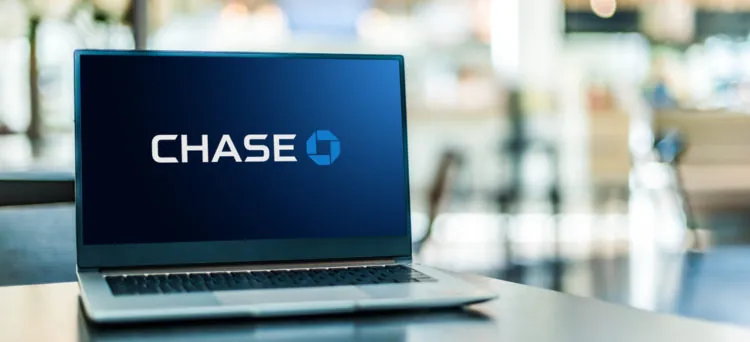Top 10 Disadvantages About Owning The Apple Card
In 2014, Apple introduced Apple Pay, a virtual account that enabled users to pay for Apple products and some other retailers. Recently, the tech giant announced an expansion of its Apple Pay program, promising to increase the number of retailers that accept Apple Pay and enhance the overall program. As part of this expansion, Apple has included the Apple Card in its offerings.
In March 2019, Apple released the Apple Card with a promise of providing a credit card that has no annual fee, low-interest rates, high security, and an easy-to-use payment plan through Apple Wallet. Additionally, the company aimed to promote financial health through this card.
The Apple Card boasts of daily cash-back rewards and a sleek design, but it hasn’t exactly lived up to the company’s expectations. A few factors have contributed to this, including the card’s variable interest rate, limited retailer access based on location, and heavy reliance on the iPhone. As a result, owning The Apple Card may present some drawbacks, which we’ve listed below.
1. You’re tied to your iPhone
The Apple Card’s main disadvantage is its heavy reliance on Apple products. Accessing your account through the Wallet App requires an iPhone, and managing your account is only possible via your phone. Moreover, the card primarily caters to Apple products, which limits your purchasing options. Although retailers accepting Apple Pay can process your transactions, the coverage is still relatively limited. Additionally, your Apple Card account remains tied to your iPhone, which may pose difficulties for Android users or those who use multiple devices. It’s worth noting that the Apple Card is exclusive to iPhone 6 models and newer.
2. The Card doesn’t actually do much
Although the Apple Card has an appealing appearance, it is ultimately dependent on your iPhone to function. The platinum card boasts a minimalist design and features your name engraved on its front, enhancing its stylish appeal. However, the absence of your account number on the card, while a security measure, can also be inconvenient. This is because not all merchants have the capability to accept payments through the mobile app, thereby necessitating the use of both your iPhone and the physical card during shopping transactions.
3. Limited Purchasing Options
Although Apple has promised to expand its purchasing options, they still remain limited. While Apple Pay and Apple Card make it easy to purchase Apple products such as iPhones and iTunes, their acceptance is not universal. Although several merchants, including Uber, T-Mobile, Duane Reade, and Walgreens, have adopted Apple Pay, there are still many merchants that do not accept it. This is especially true in suburban and rural areas, where the options for using Apple Card are much more limited than in urban areas. For instance, it is unlikely that you will be able to find a sit-down restaurant that accepts Apple Pay.
4. Cash Back Rewards
Apple Card is proud of its Daily Cash Back Rewards program, which is a strong contender in the credit card reward landscape. With the Apple Card, you can earn 3% cash back on purchases made at any Apple store or select merchants. On other purchases, you can earn 2% cash back, and for certain stores and websites, you can earn 1% cash back. While the Daily Cash Back Rewards program is an attractive perk, it is worth noting that some other credit cards offer better deals, with up to 5% cash back on purchases made quarterly across a range of categories, such as grocery stores, restaurants, and gas stations.
5. Variable Interest Rate
The Apple Card provides a credit card option that doesn’t come with an annual fee and also boasts low interest rates. While not having to pay an annual fee is certainly a positive, it’s worth noting that many credit cards offer this feature as well. It’s important to keep in mind that Apple Card’s interest rates are variable and can fluctuate quite a bit. In fact, the range can be anywhere from 13.24% to 24.24%, which is wider than what most credit cards offer in terms of variable interest rates. If your credit rating is on the lower end, you may want to consider a card with a better APR. However, Apple Card does offer a “Financial Health Promotion” program that allows users to utilize an app to calculate their interest payment before making a payment and offers helpful suggestions.
6. Lack of Perks
Although the Apple Card offers several benefits, including payment options, financial education, no annual fee, and a Daily Cash Back program, it falls short in certain areas compared to other credit cards. For instance, it does not provide an introductory APR for purchases made, nor does it offer a balance transfer program. Those with good credit may find better rewards and options with other credit cards. Additionally, there are several credit cards available that will match your cash back rewards, with no limits, after the first year.
7. Read the Fine Print
Although Apple Card offers many benefits, there are certain aspects that require careful attention to the fine print in the contract. Apple promotes the card as a fast and easy option for customers, but in reality, obtaining the credit card may not be a seamless process, even for Apple users. Additionally, while Apple boasts of no late payment fees, it’s important to note that late payments can still result in additional interest charges on the outstanding balance.
8. No Travel Rewards
If you’re someone who enjoys earning rewards to use toward travel and restaurants, you may be disappointed to learn that Apple Card does not offer any such incentives. While many other credit cards provide the option to transfer points earned to use toward airline, hotel, and dining rewards, Apple Card does not offer this feature. So, if you’re looking for a credit card that provides these types of perks, Apple Card may not be the best option for you.
9. Can’t Use for Larger Purchases
If you’re planning on financing a larger purchase, the Apple Card might not be the best option for you as it doesn’t offer special financing. In such cases, it would be wise to consider a credit card that provides special introductory offers. Additionally, the Apple Card does not allow you to add a second authorized user, which may cause inconvenience for some.
10. It Deepens Upon Your Needs
Although the Apple Card is a convenient option for some, it might not be suitable for everyone. The Apple Card and its accompanying App are user-friendly, providing security features and account management facilities. Additionally, the card offers cashback rewards, but it is limited to Apple products, which may not be desirable for some. However, the downside is that not all retailers accept Apple Pay, making it inconvenient to use the Apple Card for shopping or dining out.
You can also read:







